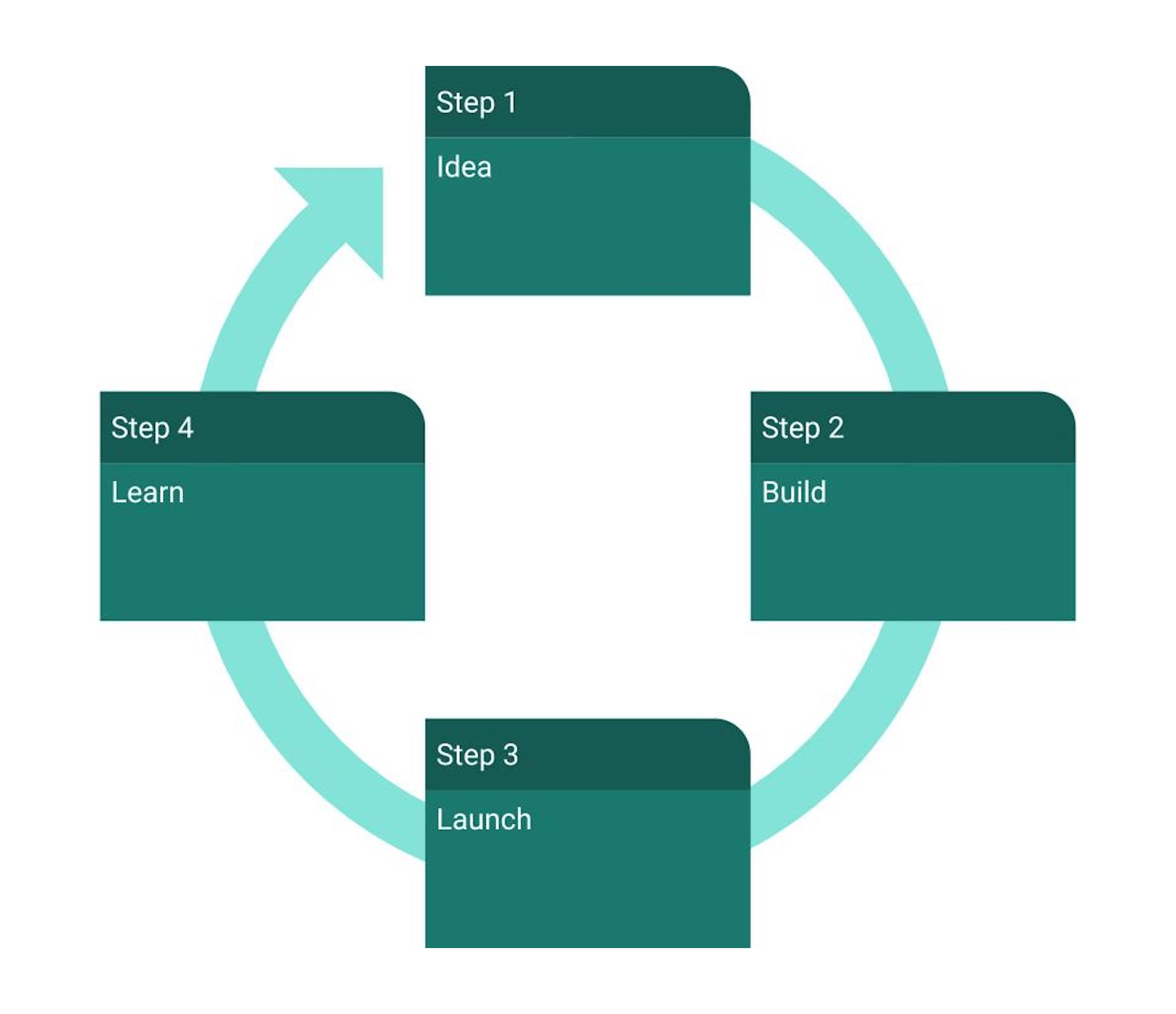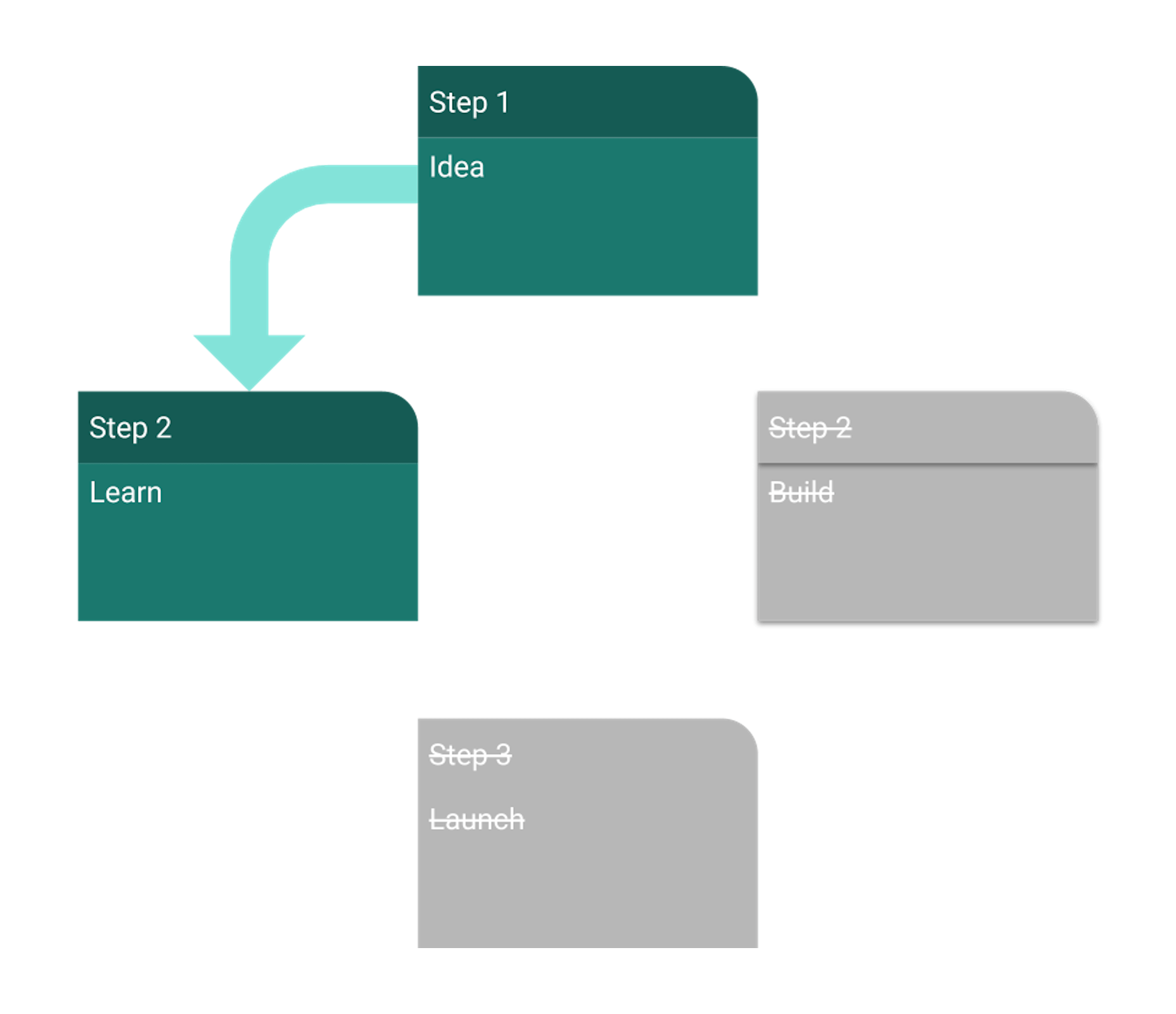Do Design Sprints Work (and Are They Worth It)?
Web designers and agencies should always be exploring new ways to improve their workflows and, in turn, make it easier to guarantee positive results for clients. Many have touted the benefits of design sprints…but does their argument hold any weight?

What Is a Design Sprint?
In basic terms, the design process looks like this: A design sprint, looks like this instead:
A design sprint, looks like this instead:
 Essentially, it removes the build and launch phases of the typical design workflow, so that design teams can get to a validated concept more quickly.
That said, the design sprint process is anything but quick and simple.
Essentially, it removes the build and launch phases of the typical design workflow, so that design teams can get to a validated concept more quickly.
That said, the design sprint process is anything but quick and simple.
How Does a Design Sprint Actually Work?
It’s a heavily structured, multi-day process that enables design teams to:- Research the problem, opportunity, and/or market. (This depends on what you’re trying to build - e.g. website, app, new feature for an existing product, etc.);
- Formulate a hypothesis;
- Visualize the concept through storyboarding;
- Prototype the solution;
- Test it with real users.
- Facilitator: the person who organizes and manages the sprint;
- Decisionmaker: the CEO or other executive who makes the final call;
- Designer: the person who builds the prototype and product;
- Marketer: the marketing director or coordinator who’s in charge of selling the product or feature to the public;
- Cost manager: the financial lead who keeps track of the budget and projections;
- Customer service lead: the person who knows the target audience and their pains best.
- Answers to the core questions they started the process with;
- A robust set of findings, including storyboards, user flows and journey maps, notes, etc;
- A prototype;
- A report that details findings from user testing;
- Validation of the hypothesis and prototype;
- A plan for implementation or a decision to return to the drawing board.
What Are the Benefits of Design Sprints?
Are you wondering what the big deal is? After all, you probably already have a web design workflow that works well and that clients have been pleased with the results of, right? There are a number of reasons why design teams are willing to dedicate five days to a design sprint:- You save time and money since you test a solution with prototypes rather than create a full product or feature.
- You reduce the chance of failure as you only pursue problems with viable solutions that are then validated by users.
- It allows for greater innovation as you have a team of contributors working towards the same goal as opposed to working on their portions in isolation.
- Real users get their hands on the prototype and can provide valuable data not just for this product, but for the brand as a whole as well as for future concepts.
- Because the team is fully involved and accountable to the sprint, they feel more invested in the product and motivated to go above and beyond in developing the perfect solution.
- It’s easier to get approval from decision-makers as they’re involved in the sprint.
Why a Design Sprint Might Not Be a Good Idea
Okay, so you’ve seen all of the good that the structure and five-day commitment can do for you. But does that mean a design sprint is right for your next project? Here are some things that might keep this seemingly flawless system from producing positive results:1. You Have No Data To Start With
A design sprint cannot start on an assumption or a complete shot in the dark. It’s a huge commitment that you and your team are going to make, and it’s not one that you want to gamble with on a hunch.2. You Already Know The Answer To The Problem
The whole point of a design sprint is to systematically define a problem, hypothesize a solution, and then test the validity of it. But if you already know the answer to the problem, there’s no reason to waste your time with this problem-solving process.3. The Problem is Too Small/Big
In this case, size matters very much. Five days might seem like enough time to tackle any problem — especially if you’re not working on anything else that week — but it can lead to major waste or exceeded scope if you don’t plot the timeline accordingly.4. You Don’t Have Enough Team Members
Since design sprints need to have between four and eight team members to work, it’s not feasible for solo freelance designers or small design teams to run design sprints. You’ll especially feel that pressure when it comes time to recruit test users and analyze the results.5. It’s Costly
Unless you work for a bustling design agency that can afford to take that many people off of active projects for a week, the design sprint process will be too costly. You might be able to produce amazing results for that one click, but that’s an entire week without other paid work getting done.6. It’s Too Difficult To Commit To
Let’s say you’re in a position to do design sprints. Is everyone on your team fully committed to the five-day process or is it going to be a struggle to get everyone in the same room and off of their mobile devices (which aren’t allowed)? This especially goes for the top-level executive who calls the final shot, but whose life is usually full of conflicting commitments and distractions.7. There Are Too Many Decision-Makers
The problem with bringing together so many talented people from different areas of the company is the matter of hierarchy. If they’re used to being the decision-maker when it comes to things like marketing and finance, who’s to say they’re going to enter this new process and be okay relinquishing that role to the ultimate decision-maker? Unless you have a facilitator who’s confident enough to wrangle all the egos and keep order, this could be a big problem.Wrap-Up
As a designer, you take a lot of pride in your work, which is why the idea of adopting a process that promises positive results is appealing. The only thing is, design sprints weren’t really built for freelancers or small businesses. They were built for large agencies that have the time, money, and resources to commit to such a huge undertaking. That’s not to say you can’t adopt the best practices used within the process now or start working towards integrating design sprints into your business. But design sprints aren’t a magic bullet, and they don’t scale well. Featured image via Unsplash.Suzanne Scacca
Suzanne Scacca is a freelance writer by day, specializing in web design, marketing, and technology topics. By night, she writes about, well, pretty much the same thing, only those stories are set under strange and sometimes horrific circumstances.
Read Next
3 Essential Design Trends, November 2024
Touchable texture, distinct grids, and two-column designs are some of the most trending website design elements of…
20 Best New Websites, October 2024
Something we’re seeing more and more of is the ‘customizable’ site. Most often, this means a button to swap between…
Exciting New Tools for Designers, October 2024
We’ve got goodies for designers, developers, SEO-ers, content managers, and those of you who wear multiple hats. And,…
15 Best New Fonts, September 2024
Welcome to our roundup of the best new fonts we’ve found on the web in the previous four weeks. In this month’s edition…
By Simon Sterne
3 Essential Design Trends, October 2024
This article is brought to you by Constantino, a renowned company offering premium and affordable website design
You…
A Beginner’s Guide to Using BlueSky for Business Success
In today’s fast-paced digital world, businesses are always on the lookout for new ways to connect with their audience.…
By Louise North
The Importance of Title Tags: Tips and Tricks to Optimize for SEO
When it comes to on-page SEO, there’s one element that plays a pivotal role in both search engine rankings and user…
By Simon Sterne
20 Best New Websites, September 2024
We have a mixed bag for you with both minimalist and maximalist designs, and single pagers alongside much bigger, but…
Exciting New Tools for Designers, September 2024
This time around we are aiming to simplify life, with some light and fast analytics, an all-in-one productivity…
3 Essential Design Trends, September 2024
September's web design trends have a fun, fall feeling ... and we love it. See what's trending in website design this…
Crafting Personalized Experiences with AI
Picture this: You open Netflix, and it’s like the platform just knows what you’re in the mood for. Or maybe you’re…
By Simon Sterne
15 Best New Fonts, August 2024
Welcome to August’s roundup of the best fonts we’ve found over the last few weeks. 2024’s trend for flowing curves and…
By Ben Moss















